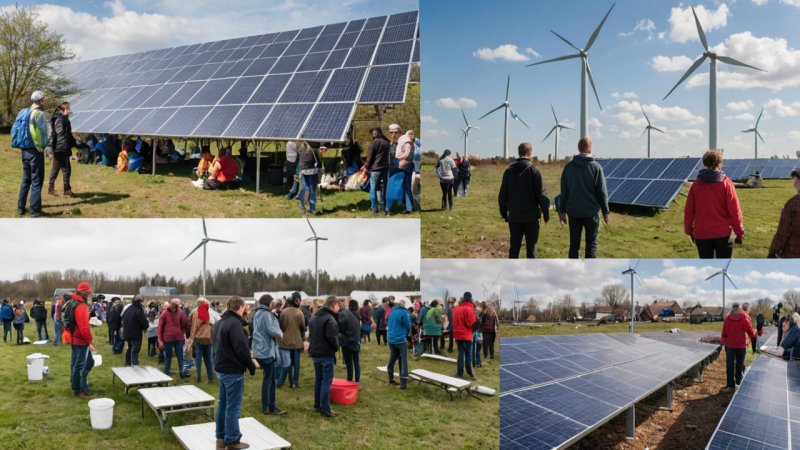As the world increasingly recognizes the urgency of addressing climate change, volunteering in renewable energy projects has emerged as a compelling option for those wishing to make a difference. This form of volunteering differs significantly from traditional volunteering, which may focus on various humanitarian efforts. In this article, we will explore the pros and cons of volunteering in renewable energy projects as opposed to traditional volunteering, highlighting key differences, unique experiences, and potential impacts on communities and the environment.
Understanding Renewable Energy Volunteering
Volunteering in renewable energy projects typically involves working on initiatives that promote sustainable energy sources such as solar, wind, and hydroelectric power. Volunteers may assist in the installation of solar panels, participate in workshops to educate communities about renewable energy, or engage in research to develop more efficient energy solutions.
Exploring Traditional Volunteering
On the other hand, traditional volunteering encompasses a vast array of activities, including community service, education, healthcare, and disaster relief. Volunteers may work in shelters, assist in educational programs, or contribute to conservation efforts, focusing on immediate social needs rather than environmental sustainability.
Pros of Volunteering in Renewable Energy Projects
- Environmental Impact: By participating in renewable energy projects, volunteers contribute directly to reducing carbon footprints and enhancing sustainable practices in communities.
- Skill Development: Volunteers often gain hands-on experience in technical fields related to energy, which can be beneficial for career growth in sustainability sectors.
- Global Perspective: Working on international projects fosters cultural exchange and understanding of global energy challenges, making it a unique experience.
Cons of Volunteering in Renewable Energy Projects
- Technical Knowledge Required: Many renewable energy projects may require specific technical skills or knowledge, limiting participation to those with relevant backgrounds.
- Long-term Commitment: Some projects may necessitate a longer commitment, which could deter individuals looking for short-term volunteer opportunities.
Pros of Traditional Volunteering
- Accessibility: Traditional volunteering opportunities are often more accessible to a wider audience, as they do not require specialized skills.
- Diverse Experiences: Volunteers can choose from a variety of fields, allowing them to explore different interests and contribute to pressing social issues.
- Immediate Impact: Many traditional volunteering roles provide immediate results, such as serving meals or providing direct assistance to those in need.
Cons of Traditional Volunteering
- Less Focus on Sustainability: While traditional volunteering is essential, it may not prioritize long-term environmental sustainability, which is crucial for combating climate change.
- Potential for Burnout: Constantly addressing urgent social issues without a focus on systemic change can lead to volunteer burnout.
Key Differences Between the Two Approaches
While both renewable energy volunteering and traditional volunteering aim to help communities, their approaches and focuses differ significantly. Renewable energy volunteering emphasizes sustainable solutions and environmental impact, often requiring specific skills and a long-term commitment. In contrast, traditional volunteering offers a broader range of opportunities, prioritizing immediate social needs and accessibility.
Unique Experiences Offered
Volunteering in renewable energy projects often provides unique experiences, such as working in diverse geographical locations, engaging in innovative technologies, and collaborating with experts in the field. Volunteers in this sector may also partake in educational initiatives that empower local communities to adopt sustainable practices.
On the other hand, traditional volunteering offers rich experiences in community engagement, cultural exchange, and direct human connection. Volunteers may find themselves in various settings, from helping at local shelters to participating in educational programs, gaining insights into the lives of those they serve.
Final Thoughts on Choosing Between the Two
Ultimately, the choice between volunteering in renewable energy projects and traditional volunteering depends on individual interests, skills, and the type of impact one wishes to have. Those passionate about sustainability and willing to commit to long-term projects may find renewable energy volunteering fulfilling. Conversely, those looking for immediate engagement and a variety of volunteering experiences may prefer traditional volunteering opportunities. Both paths have their unique merits, and each contributes to making the world a better place in different ways.






